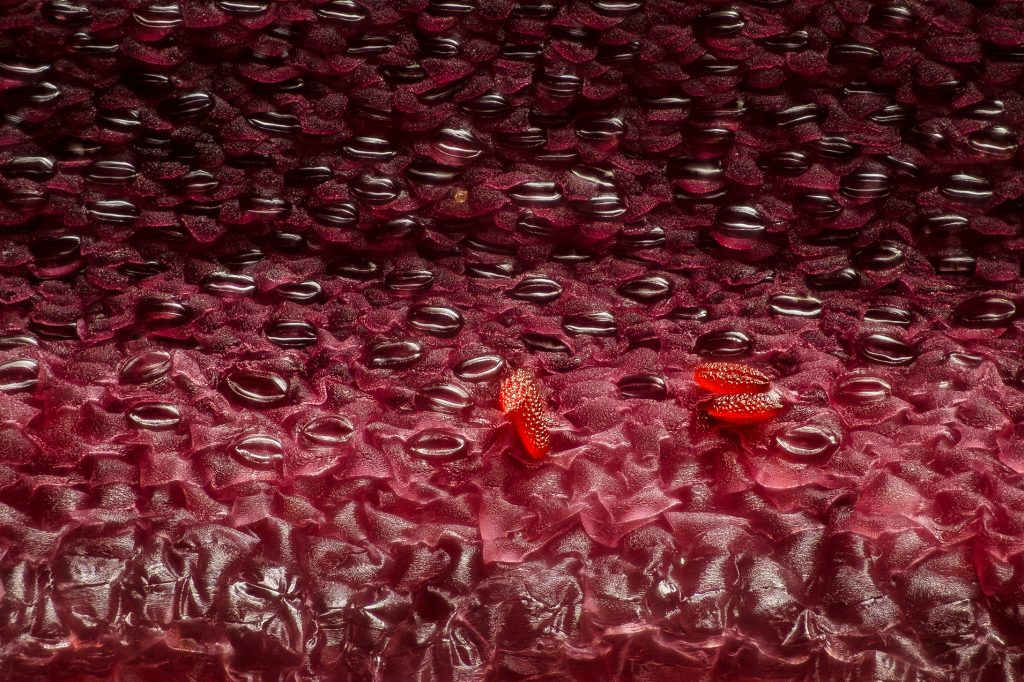
Thomas Barlow ’21 finds inspiration in small everyday things most people overlook: a craggy lichen growing on a tree, a dead insect, the light reflected by a pane of glass. Where we might see a flower, Barlow looks past the showy pink petals to the intricate parts tucked within.
The 20-year-old is a Duke student majoring in biology. By day, he takes classes and does research in a lab. But in his spare time, he likes to take up-close photographs using objects he finds outside or around the lab: peach pits, fireflies. But also pipettes, pencils.

Barlow got interested in photography in middle school, while playing around with his dad’s camera. His dad, a landscape architect, encouraged the hobby by enlisting him to take photos of public parks, gardens and playgrounds, which have been featured on various architects’ websites and in national publications such as Architecture Magazine. But “I always wanted to get closer, to see more,” Barlow said.
In high school he started taking pictures of still lifes. But he didn’t just throw flowers and fruit onto a backdrop and call it art. His compositions were a mishmash of insects and plants arranged with research gadgets: glass tubes, plastic rulers, syringes, or silicon wafers like those used for computer chips.
“I like pairing objects you would never find together normally,” Barlow said. “Removing them from their context and generating images with interesting textures and light.”
Sometimes his mother sends him treasures from her garden in Connecticut to photograph, like the pale green wings of a luna moth. But mostly he finds his subjects just steps from his dorm room door. It might be as easy as taking a walk through Duke Gardens or going for one of his regular runs in Duke Forest.
Having found, say, a flower bud or bumblebee, he then uses bits of glass, metal, mirrors and other shiny surfaces — “all objects that interact with light in some interesting way” – to highlight the interaction of light and color.
“I used to be really obsessed with dichroic mirrors,” pieces of glass that appear to change colors when viewed from different angles, Barlow said. “I thought they were beautiful objects. You can get so many colors and reflections out of it, just by looking at it in different ways.”
In one pair of images, the white, five-petaled flowers of a meadow anemone are juxtaposed against panels of frosted glass, a pipette, a mechanical pencil.
Another image pair shows moth wings. One is zoomed in to capture the fine details of the wing scales. The other zooms out to show them scattered willy-nilly around a shimmering pink circle of glass, like the remnants of a bat’s dinner plate.

For extreme close-ups, Barlow uses his Canon DSLR with a microscope objective mounted onto the front of a tube lens. Shooting this close to something so small isn’t just a matter of putting a bug or flower in front of the camera and taking a shot. To get every detail in focus, he takes multiple images of the same subject, moving the focal point each time. When he’s done he’s taken hundreds of pictures, each with a different part of the object in focus. Then he merges them all together.
At high magnification, Barlow’s flower close-ups reveal the curly yellow stamens of a zinnia flower, and the deep red pollen-producing parts of a tiger lily.
“I love that you can see the spikey pollen globules,” Barlow said.

When he first got to Duke he was taking photos using a DIY setup in his dorm room. Then he asked some of the researchers and faculty he knew if there was anything photography-related he could do for their labs.
“I knew I was interested in nature photography and I wanted to practice it,” Barlow said.
One thing led to another, and before long he moved his setup to the Biological Sciences building on Science Drive, where he’s been photographing lichens for Daniele Armaleo and Jolanta Miadlikowska, both lichenologists.
“A lichen photo might not seem like anything special to an average person,” Barlow said. “But I think they’re really stunning.”




